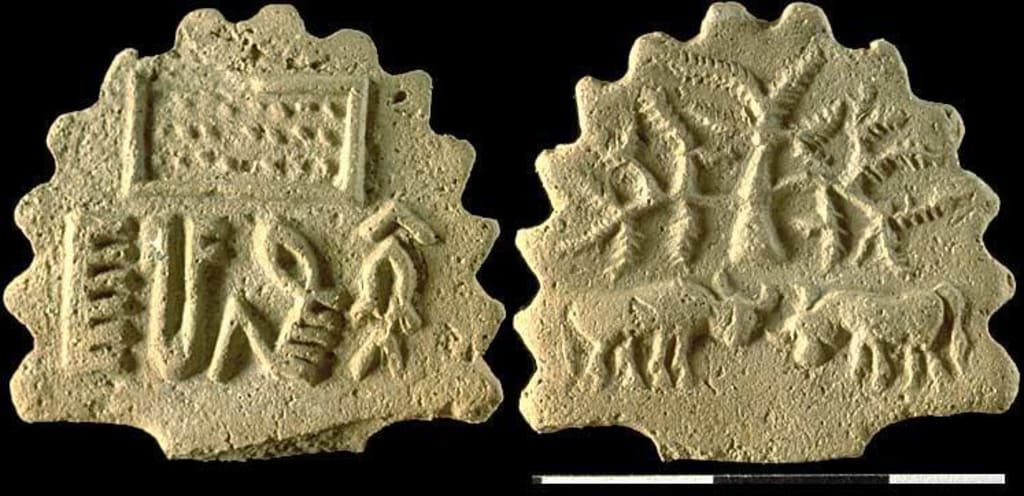
The script of the ancient Indus Valley Civilization (also known as the Harappan Civilization), dating back to the 3rd millennium BCE, remains one of the most enduring mysteries in archaeology and linguistics. Discovered in the early 20th century at Harappa and Mohenjo-Daro, two major cities of this Bronze Age civilization located in present-day Pakistan and northwest India, the script comprises a series of symbols and inscriptions found on seals, pottery, and other artifacts.
Imagine the bustling streets and meticulously planned cities of Mohenjo-Daro and Harappa, where ancient Indus Valley inhabitants conducted trade, governed their communities, and left behind tantalizing clues to their written language. The Indus script, composed of intricate symbols resembling pictographs and abstract signs, has been found on thousands of artifacts, suggesting it was used for administrative, commercial, and possibly ceremonial purposes.
The script's decipherment has long eluded scholars, presenting a formidable challenge due to the absence of bilingual texts or known equivalents in other ancient languages. Despite numerous attempts over the decades, the precise phonetic or semantic meaning of the Indus script remains undeciphered, fueling ongoing debate and speculation within the academic community.
Nevertheless, the significance of the Indus script extends beyond its linguistic mysteries. Its widespread presence across the ancient Indus Valley sites indicates a sophisticated level of social organization and administrative control, suggesting a literate and numerate society capable of recording information and maintaining centralized governance.
The discovery of seals bearing Indus script inscriptions, often accompanied by depictions of animals such as bulls and unicorns, suggests a connection to trade and possibly ritualistic practices. These seals, used to mark goods and containers, indicate the civilization's engagement in long-distance trade networks extending to Mesopotamia and beyond, where Indus merchants exchanged commodities such as textiles, pottery, and precious metals.
The Indus script's enigmatic nature has sparked various theories and hypotheses. Some scholars propose it may represent a logographic or syllabic script, while others suggest it could be a proto-writing system that predates fully developed writing systems found in ancient Mesopotamia, Egypt, and China. The absence of extensive textual corpus and linguistic context has made it challenging to definitively classify the script's nature and purpose.
Despite these challenges, recent advances in technology and interdisciplinary research offer new avenues for understanding the Indus script. Computational approaches, statistical analyses, and comparisons with other ancient scripts have provided fresh insights into its possible structure and linguistic characteristics, although conclusive decipherment remains elusive.
The legacy of the Indus Valley script continues to fascinate scholars and the public alike, offering a window into the cultural and intellectual achievements of one of the world's earliest urban civilizations. Its undeciphered status underscores the enduring mysteries of the ancient past and the complexities of reconstructing the histories of ancient societies based on fragmentary evidence.
In celebrating the legacy of the Indus Valley script, we honor the ingenuity and cultural sophistication of the Harappan Civilization, whose achievements in urban planning, engineering, and trade left an indelible mark on the development of South Asian civilizations. The script serves as a testament to their intellectual curiosity and organizational capabilities, reflecting a society that valued literacy, commerce, and artistic expression.
As ongoing research continues to shed light on the Indus script's complexities, it reinforces the importance of interdisciplinary collaboration and technological innovation in unraveling ancient mysteries. By studying the script, we gain deeper insights into the Indus Valley Civilization's social structure, economic networks, and cultural practices, enriching our understanding of humanity's shared past and the diversity of ancient civilizations.
Ultimately, the legacy of the Indus Valley script invites us to contemplate the enduring quest for knowledge and the resilience of human ingenuity in deciphering the mysteries of ancient languages and civilizations. It stands as a poignant reminder of the breadth of human achievement and the continuous evolution of scholarly inquiry, inspiring curiosity and admiration for the ancient Indus Valley Civilization's cultural heritage.
About the Creator
Marveline Merab
“History never repeats itself. Man always does.”
― Voltaire
Enjoyed the story? Support the Creator.
Subscribe for free to receive all their stories in your feed. You could also pledge your support or give them a one-off tip, letting them know you appreciate their work.






Comments
There are no comments for this story
Be the first to respond and start the conversation.